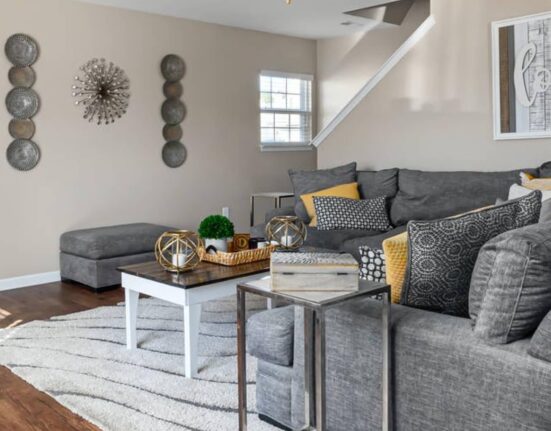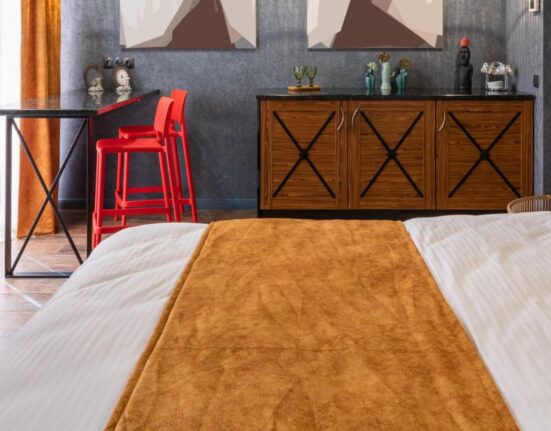When you hear the words “mansion houses,” what comes to mind? Perhaps you can imagine grand estates with sprawling lawns, luxurious rooms filled with antique furniture and ornate chandeliers hanging from high ceilings. Mansion houses are not just buildings but symbols of wealth, status, and luxury. But what really makes a house a mansion? And how do these remarkable properties capture our imagination?
This article explores everything you need to know about mansion houses—from their fascinating history to their impressive architectural features, unique amenities, and the experience of living in one. Let’s dive into the luxurious world of mansion houses and discover why they continue to captivate people worldwide.
What Defines a Mansion House?
The term “mansion house” is often used to describe large, luxurious homes, but what actually qualifies a house as a mansion? Generally, a mansion is defined by:
- Size: Mansion houses are typically very large, usually starting at around 5,000 square feet.
- Location: They are often found in prestigious areas, such as high-end neighbourhoods, city outskirts, or vast countryside estates.
- Luxury and Amenities: Mansion houses have high-end features and extravagant amenities like swimming pools, home theatres, expansive gardens, and sometimes even private gyms and spas.
A mansion house isn’t just about square footage; it’s about luxury, design, and the experience of upscale living.
A Brief History of Mansion Houses
Mansion houses have a rich history that dates back centuries. In ancient times, wealthy Romans and Greeks built grand villas to showcase their wealth and status. During the Renaissance, the European elite constructed palatial homes filled with art, intricate designs, and elaborate architecture. By the 18th and 19th centuries, mansions became popular among American and European aristocracy, particularly as symbols of the Industrial Revolution’s prosperity.
Today, mansion houses still carry a sense of history and prestige, blending classic design elements with modern luxury.
Architectural Features of Mansion Houses
Their unique architectural style sets mansion houses apart from other large homes. Each mansion has its own character, but some common architectural features include:
- High Ceilings: Often around 12 to 20 feet high, creating a feeling of openness and grandeur.
- Grand Staircases: Many mansion houses have sweeping staircases that are a focal point in the entryway.
- Columns and Arches: These classical elements add an elegant touch to the structure.
- Large Windows: Oversized windows bring in natural light and offer beautiful views of the surrounding landscape.
- Expansive Floor Plans: Open-concept layouts and large rooms are typical in mansion houses.
Mansion houses are also known for their unique design elements, ranging from Victorian and Tudor styles to more modern and minimalist architecture. Each mansion is designed with attention to detail, ensuring it stands out.
Luxurious Amenities in Mansion Houses
One of the most appealing aspects of mansion houses is the extensive list of luxury amenities they often include. These amenities provide not only convenience but also a lavish lifestyle. Some common amenities you might find in a mansion house are:
- Home Theaters: Complete with comfortable seating, high-quality sound systems, and big screens for an authentic cinema experience.
- Private Gyms and Spas: Many mansion houses have their own workout and relaxation spaces.
- Wine Cellars: A dedicated wine cellar to store and showcase collections is a popular feature for wine enthusiasts.
- Game Rooms and Libraries: Mansion houses often include spaces for entertainment and quiet reflection.
- Outdoor Pools and Hot Tubs: Some mansions even have indoor pools and jacuzzis.
- Chef’s Kitchens: Large, fully-equipped kitchens for entertaining and professional cooking.
These amenities make mansion houses ideal for those who value privacy, luxury, and convenience.
The Importance of Location for Mansion Houses
Location is a key factor influencing the value and appeal of mansion houses. They are usually found in:
- Exclusive Neighborhoods: In urban areas, mansions are often located in prestigious neighbourhoods known for high property values.
- Countryside Estates: Many mansion houses are built on sprawling estates that offer privacy and scenic views.
- Coastal Areas: Waterfront mansions are incredibly desirable, providing residents with stunning views and beach access.
The location of a mansion house impacts its price, overall appeal, and desirability. For example, a mansion in the heart of Beverly Hills will have a completely different feel compared to one in the peaceful English countryside.
How Mansion Houses Differ from Regular Luxury Homes
Mansion houses are often confused with luxury homes, but they’re not exactly the same. While all mansions can be considered luxury homes, not all luxury homes qualify as mansions. Here’s a quick comparison to help clarify:
| Feature | Mansion Houses | Luxury Homes |
|---|---|---|
| Size | High-end neighbourhoods | Can be smaller |
| Amenities | Extensive and extravagant | High-end but not always unique |
| Architectural Style | Unique and grand | Elegant, may follow modern trends |
| Location | Exclusive, prestigious areas | High-end neighborhoods |
| Purpose | Status symbol and comfort | Comfort and lifestyle |
In short, mansion houses tend to offer more space, prestige, and luxury than a typical luxury home.
The Modern Mansion House: Blending Tradition with Innovation
While many think mansion houses are classic, old-fashioned homes, today’s mansions often incorporate cutting-edge technology and contemporary designs. Here are some of the modern features you might find in a mansion house today:
- Smart Home technology is common in modern mansion houses, from automated lighting to voice-controlled thermostats.
- Sustainable Materials: Many new mansions are built using eco-friendly materials to reduce environmental impact.
- Minimalist Design: Some contemporary mansion houses have minimalist interiors emphasising clean lines and open spaces.
- Advanced Security Systems: Security is a top priority in mansion houses, with systems that include CCTV, alarms, and even fingerprint or facial recognition entry.
Today’s mansion houses are designed to provide comfort and convenience, blending traditional luxury with modern innovation.
The Cost of Owning a Mansion House
Owning a mansion house is a significant financial investment. The cost doesn’t just include the price of the property itself and maintenance, property taxes, and additional expenses. Here’s a breakdown of some of the costs associated with mansion houses:
- Property Taxes: These can be quite high due to most mansions’ large size and valuable location.
- Maintenance and Repairs: Mansion houses require regular upkeep, from landscaping to repairing luxurious features like pools and fountains.
- Utilities: Large spaces mean higher utility bills for heating, cooling, and electricity.
- Staffing: Some mansion owners employ a full staff, including cleaners, landscapers, and security personnel.
Given these costs, mansion houses are typically owned by individuals with substantial financial resources.
Famous Mansion Houses Around the World
Mansion houses have become iconic landmarks in many places around the world. Here are a few famous mansion houses that showcase different styles and features:
- The Biltmore Estate (USA): This historic mansion in North Carolina is America’s largest privately-owned home, boasting 250 rooms and sprawling gardens.
- Buckingham Palace (UK): The official residence of the British monarch, Buckingham Palace is one of the most famous mansion houses in the world.
- Villa Leopolda (France): Located on the French Riviera, this luxury mansion is famous for its opulent gardens and rich history.
- Hearst Castle (USA): Located in California, Hearst Castle is known for its grand architecture and stunning art collections.
These mansion houses offer a glimpse into the grandeur and luxury that has defined this type of home for centuries.
Why Mansion Houses Continue to Captivate Us
Mansion houses hold a unique appeal that goes beyond their physical appearance. They represent a dream, a lifestyle, and an ideal of living many aspire to. Mansion houses are symbols of success, achievement, and luxury—concepts that resonate deeply with people worldwide. Even if only a few can afford to live in such opulence, mansion houses provide inspiration and a glimpse into what’s possible.
From their rich history to modern amenities, mansion houses are the pinnacle of luxury living. They allow their owners to live in comfort and style while also enjoying the prestige of owning such a magnificent property.
Conclusion: The Lasting Allure of Mansion Houses
Mansion houses are more than just large homes—they’re masterpieces of architecture, symbols of wealth, and representations of the ultimate luxury lifestyle. They combine space, beauty, and functionality to capture the imagination and command respect. From their impressive history to modern features, mansion houses offer a unique experience that few other homes can match.
Whether you dream of owning a mansion house one day or simply enjoy admiring their grandeur from afar, there’s no denying these properties’ allure. Mansion houses have been and likely always will be, a symbol of aspiration and excellence in real estate.








